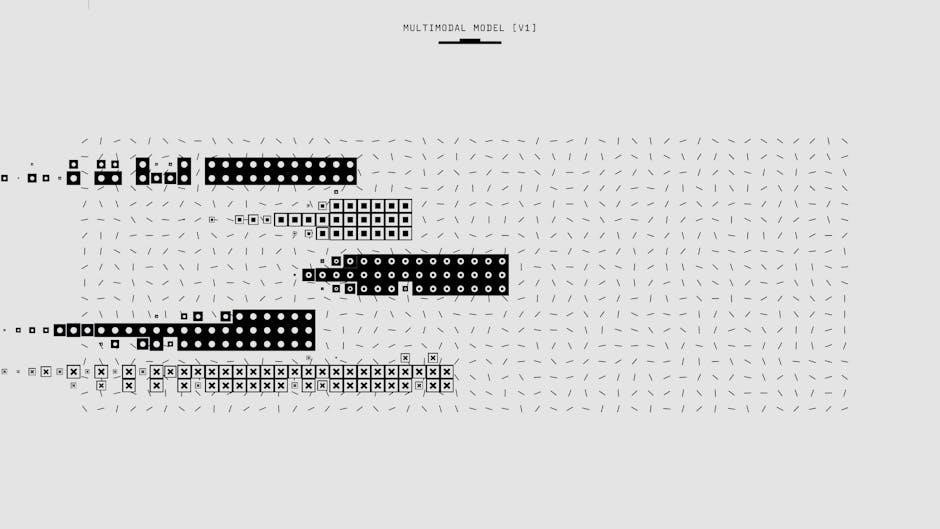Understanding Tubigrip Bandages
Tubigrip bandages are versatile elasticated supports‚ providing circumferential tissue support. Available in various sizes‚ selecting the correct size ensures optimal compression and effectiveness. This guide helps you understand Tubigrip sizing‚ find size charts‚ and measure accurately for the perfect fit.

Importance of Correct Tubigrip Sizing
Selecting the correct Tubigrip size is crucial for effective support and desired compression. Tubigrip is available in a full range of sizes and widths‚ typically A to L‚ to suit various applications‚ from a child’s wrist to an adult’s knee. An appropriately sized Tubigrip provides even pressure‚ aiding in reducing swelling and supporting sprains and strains.
If the Tubigrip is too small‚ it can cause excessive pressure‚ discomfort‚ and potential circulation issues. Conversely‚ a Tubigrip that is too large may not provide adequate support‚ rendering it ineffective; Correct sizing ensures the bandage conforms to the body’s shape‚ delivering uniform pressure.
Using the Tubigrip sizing chart is important for determining the best fit. Circumference measurements of the limb are essential for selecting the right size. Incorrect sizing can lead to sub-bandage pressures outside the recommended range. This will compromise the therapeutic benefits. The correct Tubigrip size will provide optimal support and comfort.
Where to Find a Tubigrip Sizing Chart PDF
Finding the correct Tubigrip size chart PDF is essential for ensuring optimal support and compression. One of the primary locations to find this resource is the Mölnlycke website‚ the manufacturer of Tubigrip. Their official site often provides comprehensive sizing guides in PDF format‚ detailing various sizes and corresponding limb measurements.
Additionally‚ many online medical supply retailers‚ such as Vitality Medical and Henry Schein‚ may host Tubigrip sizing charts as PDFs on their product pages or resource sections. These retailers often provide these charts to assist customers in making informed purchasing decisions.
Another avenue for obtaining a Tubigrip sizing chart PDF is through healthcare professionals. Doctors‚ physical therapists‚ and pharmacists may have access to these charts and can provide them to patients. It is also worthwhile to search online using specific keywords like “Tubigrip sizing chart PDF” to find downloadable versions from various sources. Always ensure the chart is from a reputable source to guarantee accuracy.

Accessing the Tubigrip Sizing Chart on Mölnlycke Website
To effectively access the Tubigrip sizing chart on the Mölnlycke website‚ start by navigating to their official homepage. Once there‚ utilize the search function‚ typically located in the upper right corner‚ and enter “Tubigrip sizing chart.” This should yield relevant results‚ including direct links to the chart or related product information pages.
Alternatively‚ browse through the “Products” or “Wound Care” sections of the website. Look for Tubigrip specifically‚ and the sizing chart might be available as a downloadable PDF within the product details. Mölnlycke often provides comprehensive support resources alongside their products to assist users in proper selection and application.
If you encounter difficulty finding the chart‚ explore the “Resources” or “Downloads” section of the website‚ where technical documents and sizing guides are often stored. Should all else fail‚ consider using the “Contact Us” option to reach out to Mölnlycke’s customer service. They can provide direct assistance and email you the Tubigrip sizing chart PDF for convenient access.

Requesting the Tubigrip Sizing Chart from Customer Service
If you are unable to locate the Tubigrip sizing chart PDF on the manufacturer’s website‚ contacting their customer service department is a reliable alternative. To do this‚ first‚ visit the official website of Mölnlycke‚ the primary manufacturer of Tubigrip‚ and navigate to the “Contact Us” section.
Here‚ you will typically find several options‚ including a phone number‚ email address‚ and a contact form. Choose the method that is most convenient for you. When you reach out‚ clearly state that you are looking for the Tubigrip sizing chart in PDF format and explain that you were unable to find it on their website.
Provide them with any relevant information‚ such as the specific Tubigrip product you are interested in‚ if applicable. Customer service representatives are usually well-equipped to handle such requests and can either direct you to the appropriate page on their website or send the PDF directly to your email address. Ensure to have your email readily available for this purpose. This method ensures you receive the most accurate and up-to-date sizing information.
Elements of a Tubigrip Sizing Chart
Tubigrip sizing charts typically include size codes (A-L)‚ corresponding limb circumference measurements in centimeters and inches‚ and sometimes‚ sub-bandage pressure information. These elements help determine the correct Tubigrip size for effective support and compression.
Size Codes and Limb Circumference
Tubigrip sizing charts utilize size codes‚ typically ranging from A to L‚ to represent different bandage widths. Each size code corresponds to a specific range of limb circumferences‚ measured in both centimeters and inches. This correlation is crucial for selecting the appropriate Tubigrip size. The chart specifies minimum and maximum limb circumference for each size code.
Accurate measurement of the limb’s circumference is essential for effective use of the sizing chart. For instance‚ a code “A” may correspond to a circumference range suitable for a child’s wrist‚ while a code “L” is designed for larger limbs like an adult’s thigh. The sub-bandage pressure‚ also sometimes indicated on the chart‚ relies on the correct size selection.
Using the correct size code based on the limb circumference ensures optimal support and compression. This prevents the bandage from being too tight‚ which could restrict circulation‚ or too loose‚ which would provide inadequate support. The chart acts as a guide for various applications‚ from infant limbs to larger body sections.
Width Measurements (A-L)
The Tubigrip sizing chart incorporates a series of width measurements denoted by letters ranging from A to L. These letter codes signify the width of the Tubigrip bandage when laid flat‚ providing a crucial reference point for selecting the correct size. Each lettered size corresponds to a specific range of limb circumferences‚ ensuring a snug yet comfortable fit for various body parts.
For example‚ size A is designed for smaller circumferences‚ like those of an infant’s foot or a child’s wrist. As the letters progress towards L‚ the bandage width increases‚ accommodating larger limbs such as adult knees or thighs. These width measurements are essential for ensuring that the Tubigrip provides adequate support and compression without being overly restrictive.
When consulting the Tubigrip sizing chart‚ it’s important to correlate the width measurement (A-L) with the corresponding limb circumference to achieve the optimal fit. This ensures that the Tubigrip stays in place‚ provides effective support‚ and promotes healing or reduces swelling as intended.

Measuring for the Correct Tubigrip Size
Accurate measurement is crucial for effective support and comfort. Use a flexible tape measure to determine limb circumference. Ensure a snug fit‚ referencing the Tubigrip sizing chart to match your measurements with the appropriate size code.
Circumference Measurement
Obtaining an accurate circumference measurement is the first and most critical step in selecting the right Tubigrip size. Use a flexible measuring tape‚ positioning it around the widest part of the limb where the Tubigrip will be applied. Ensure the tape is snug but not constricting‚ maintaining a comfortable tension against the skin.
Record the measurement in centimeters or inches‚ depending on the units used in the Tubigrip sizing chart. It’s helpful to take the measurement twice to confirm accuracy. If the measurement falls between two sizes on the chart‚ consider the intended use.
For general support‚ opt for the smaller size‚ while for conditions involving swelling‚ the larger size may be more appropriate. Accurate circumference measurement is vital to ensure the Tubigrip provides optimal support and compression without compromising comfort or circulation. Remember to consult the specific product details.
Considering Limb Size for Optimal Fit
Beyond the circumference measurement‚ consider the overall shape and size of the limb to achieve the best Tubigrip fit. Factors such as muscle mass‚ presence of swelling‚ and the limb’s natural contours can influence the ideal Tubigrip size. For limbs with significant muscle definition‚ a slightly larger size might be necessary to avoid excessive constriction.
Conversely‚ if the limb is slender or prone to significant swelling fluctuations‚ a snugger fit may be preferable to ensure adequate support. It’s also important to account for any bandages or dressings that will be worn underneath the Tubigrip‚ as these will add to the overall circumference.
Remember that Tubigrip is designed to provide firm‚ consistent support‚ so selecting a size that accommodates these factors is crucial for both comfort and therapeutic effectiveness. If in doubt‚ consult with a healthcare professional to determine the most appropriate size for your specific needs. Always prioritize comfort and proper circulation when choosing a Tubigrip size.
How to Use Tubigrip
To use Tubigrip‚ cut it to twice the limb length‚ plus overlap. Apply like a stocking‚ double it back‚ ensuring the upper edge is higher. This provides lasting‚ effective support and reduces swelling.
Cutting and Applying Tubigrip
Proper cutting and application are crucial for Tubigrip’s effectiveness. Begin by measuring the required length. Cut the Tubigrip to twice the length needed for the limb‚ adding an extra 2-3 cm for overlap. This ensures sufficient material for a double layer‚ providing the necessary support and compression.
To apply‚ pull the Tubigrip onto the limb like a stocking‚ ensuring it is smooth and wrinkle-free. Next‚ double the Tubigrip back over the limb‚ positioning the upper edge 2-3 cm higher than the first layer. This double-layer application creates consistent pressure and support.
Ensure the Tubigrip conforms to the body’s shape‚ distributing pressure evenly to control swelling. Avoid applying it too tightly‚ as this can restrict circulation. If discomfort or signs of restricted blood flow occur‚ remove and reapply the Tubigrip with less tension.
Regularly check the application and readjust if needed. Proper cutting and application maximize the benefits of Tubigrip‚ providing effective support and compression for various conditions. Using correct size will ensure a correct and comfortable support.
Applications of Tubigrip
Tubigrip’s versatility makes it suitable for various applications. It provides firm support for sprains‚ strains‚ and swelling‚ aiding in injury rehabilitation and recovery. Its conforming design ensures uniform pressure‚ helping control swelling effectively.
In managing soft tissue injuries‚ Tubigrip offers consistent support‚ promoting healing and reducing discomfort. It is also beneficial for post-operative care‚ providing support and compression to surgical sites. The bandage’s adaptable nature makes it suitable for different body parts‚ from limbs to joints.
Tubigrip is commonly used in treating venous ulcers and swollen ankles. Its compression aids in improving circulation and reducing edema. It is simple to apply‚ making it a practical alternative to multi-layer bandaging in chronic venous ulcer management.
Furthermore‚ Tubigrip can be used to secure dressings and provide support for casts. Its range of sizes ensures suitability for diverse patient needs‚ from infants to adults. The bandage is a valuable tool in both clinical and home settings‚ offering reliable support and compression for a wide array of conditions. It is important to choose the right size.




Leave a Reply
You must be logged in to post a comment.